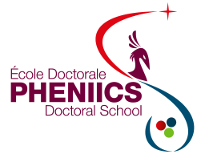Orateur
M.
Jonathan Riffaud
(CEA/DRT/LIST/DM2I/LNHB)
Description
Dosimetry in reactor aims to determine the neutron fluence received during an irradiation and to characterize the spectrum (energy distribution of neutrons). This technique is based on the analysis of the activity of irradiated dosimeters, such as Nb-93(n,)Nb-93m and Rh-103(n,)Rh-103m with energies emissions between 16 and 22 keV. The activity measurement of these dosimeters is conventionally performed by X-ray spectrometry, but the low-energy of emitted photons makes it difficult to derive reliable results with low uncertainties. Approaches to improve these characterizations are presented: it includes high accuracy efficiency calibration of a HPGe detector using both experiments and Monte Carlo simulation, improvement of the analytical fit of experimental points for low-energy photons, calculation of corrective factors for the measurement geometry (self-attenuation in the solid sample) and fluorescence effects. The knowledge of the decay data with the lowest possible uncertainties is also required, especially the intensities of X-rays emissions. For Nb-93m, decay data have been updated in 2013 and uncertainties about intensities are smaller than 2%. The last update of Rh-103m decay data have been published in 2002, uncertainties on X-ray emission intensities are higher than 7% and the last measurement occurred in 1979. To improve the knowledge of Rh-103m decay data, a new measurement will be performed in June thanks to specific irradiation of rhodium samples in ISIS reactor, followed by activity measurement using liquid scintillation and photon emission intensity using X-ray spectrometry. In addition, the measurement of K fluorescence yields of niobium and rhodium using monochromatic radiation (SOLEIL synchrotron) will provide further information on the K X-ray emission of both elements.
Auteur principal
M.
Jonathan Riffaud
(CEA/DRT/LIST/DM2I/LNHB)



